eBook 2: Chapter 6
Implement Business Continuity Plan (BCM Plan) Development Phase for the Singapore Institute of Technology (SIT)
Introduction
![[C6] BCM Plan Development](https://no-cache.hubspot.com/cta/default/3893111/052950a1-b690-4303-87b6-7848f69f2513.png)
The Plan Development Phase represents a pivotal stage in the Business Continuity Management (BCM) planning process for the Singapore Institute of Technology (SIT).
Following the completion of the Risk Analysis and Review (RAR), Business Impact Analysis (BIA), and Business Continuity Strategy (BCS) phases, the focus now shifts to translating strategies into actionable, documented Business Continuity (BC) Plans.
 At SIT, where learning continuity and digital delivery are critical to its mission as Singapore’s university of applied learning, the BC Plan ensures that each academic and administrative unit is equipped with a structured and practical guide for responding to and recovering from disruptions.
At SIT, where learning continuity and digital delivery are critical to its mission as Singapore’s university of applied learning, the BC Plan ensures that each academic and administrative unit is equipped with a structured and practical guide for responding to and recovering from disruptions.
This phase formalises the operational framework that allows SIT to safeguard its teaching, research, and student support activities—whether during a campus-wide IT outage, a public health emergency, or a prolonged facilities disruption.
What Does Plan Development Entail?
The development of the Business Continuity Plan involves a series of coordinated stages designed to ensure that the plans are comprehensive, practical, and aligned with SIT’s strategic objectives.
Determination of the Organisation of the BC Plan Document
This stage involves defining the structure and content of SIT’s BC Plan. It ensures consistency across all Business Units (BUs) while allowing flexibility for the unique operational requirements of each department.
Designing and Developing the BC Plan Template
SIT’s BCM Office, in consultation with the various schools and administrative divisions, designs a standard BC Plan template that outlines required sections such as:
- Plan activation and escalation procedures
- Emergency response contacts
- Business function recovery priorities
- IT systems and data recovery requirements
- Communication protocols and key stakeholders
For example, the Office of Student Administration (OSA) focuses on maintaining continuity in student registration and examination processes.
At the same time, the Information Technology Division (ITD) will emphasise IT service restoration and cybersecurity controls. A unified template ensures all plans follow a consistent structure while addressing their distinct recovery needs.
Determining the Recovery Organisation
Each business unit identifies a Recovery Team that will take charge during a disruption. This typically includes a BU BCM Coordinator, key academic or administrative representatives, and relevant support staff.
At SIT, for instance, the Academic Programme Delivery Recovery Team may comprise the Programme Director, School Administrator, and E-Learning Technologist, who are responsible for ensuring that teaching and assessment activities can transition to remote platforms within specified recovery time objectives (RTOs).
Conducting a BC Plan Writing Workshop to Guide Plan Writers
Once the template and structure are established, the BCM Office conducts a BC Plan Writing Workshop for all BU BCM Coordinators and their teams. The workshop serves to:
- Clarify the purpose and scope of the BC Plan.
- Provide hands-on guidance in completing each section of the plan template.
- Ensure alignment with SIT’s overall BCM policy and framework.
During this stage, each BCM Coordinator, representing their respective faculty or department, completes their portion of the BC Plan using information derived from the BIA and BCS phases.
For example:
- The Registrar’s Office has documented contingency measures to ensure that student enrollment, transcript issuance, and graduation verification can continue even if access to the student management system is disrupted.
- The Digital Learning Division outlines recovery strategies for key e-learning platforms such as SITLearn+ and Moodle, including backup servers and alternate hosting arrangements.
This participatory workshop approach fosters ownership and understanding among plan owners, ensuring that recovery procedures are not only documented but also operationally feasible.
Finalisation of the BC Plan Production
The final stage involves reviewing, validating, and approving the completed BC Plans to ensure they are accurate, comprehensive, and ready for implementation.
Validation by BU BCM Coordinators and Heads of Business Units
Each BU BCM Coordinator reviews the completed plan for accuracy, ensuring that all critical functions identified in the BIA are covered adequately with actionable steps.
The Head of Department or Dean then endorses the plan, verifying that it reflects current operations and resources.
For example, the Facilities Management Division would verify that the recovery procedures for essential building systems—such as power, ventilation, and access control—align with service agreements and vendor response capabilities.
Consolidation and Repository
Once validated, all BC Plans are consolidated into SIT’s central BCM repository, managed by the BCM Office.
This repository serves as the official reference during disruptions and supports periodic reviews and updates.
This process ensures that SIT’s BCM framework remains a living system—one that evolves with technological changes, organisational restructuring, and emerging threats.
The Plan Development Phase is where SIT’s business continuity strategies are transformed into a tangible, actionable framework for resilience.
Through a structured process of template design, collaborative workshops, and validation, SIT ensures that each department—from academic schools to support units—possesses a clear, functional plan for responding to crises and restoring operations.
Ultimately, this phase reinforces SIT’s institutional commitment to safeguarding learning continuity—ensuring that students, faculty, and staff can continue their academic pursuits and essential services with minimal disruption, regardless of the challenges that may arise.




![BCM E2 PM [Plan Development] Banner](https://blog.bcm-institute.org/hs-fs/hubfs/BCM%20E2%20Blog%20Banner/BCM%20E2%20PM%20%5BPlan%20Development%5D%20Banner.png?width=750&height=150&name=BCM%20E2%20PM%20%5BPlan%20Development%5D%20Banner.png)

![[C1] Business Continuity Management Planning Methodology](https://no-cache.hubspot.com/cta/default/3893111/bc2f0e17-2827-4ce0-9a06-7c05434314fc.png)
![[C2] Project Management](https://no-cache.hubspot.com/cta/default/3893111/3a311fa3-a1b1-47e6-b10d-af447cd88e02.png)
![[C3] Risk Analysis and Review](https://no-cache.hubspot.com/cta/default/3893111/b9faa4ef-9c43-4215-a838-b89bf6160dca.png)
![[C4] Business Impact Analysis](https://no-cache.hubspot.com/cta/default/3893111/8bc06236-91b5-4298-b94f-a3edd5816628.png)
![[C5] Business Continuity Strategy](https://no-cache.hubspot.com/cta/default/3893111/ff7d5c03-a93b-4131-b673-f997d6592d89.png)
![[C7] Testing and Exercising](https://no-cache.hubspot.com/cta/default/3893111/e4fcdf0f-e927-488f-baa8-4564c74bda78.png)
![[C8] Program Management](https://no-cache.hubspot.com/cta/default/3893111/625627a6-2a06-46dd-ab95-e84e8c2ed22e.png)
![[C9] Summary](https://no-cache.hubspot.com/cta/default/3893111/9e5f7b73-8827-42b4-b5b2-769d4170c7e4.png)
![[C10] Back Cover for BCM](https://no-cache.hubspot.com/cta/default/3893111/f23b8be6-b8e3-46cf-816c-2f5de1541220.png)


![Register [BL-B-3]*](https://no-cache.hubspot.com/cta/default/3893111/ac6cf073-4cdd-4541-91ed-889f731d5076.png)



![FAQ [BL-B-3]](https://no-cache.hubspot.com/cta/default/3893111/b3824ba1-7aa1-4eb6-bef8-94f57121c5ae.png)
![Email to Sales Team [BCM Institute]](https://no-cache.hubspot.com/cta/default/3893111/3c53daeb-2836-4843-b0e0-645baee2ab9e.png)





